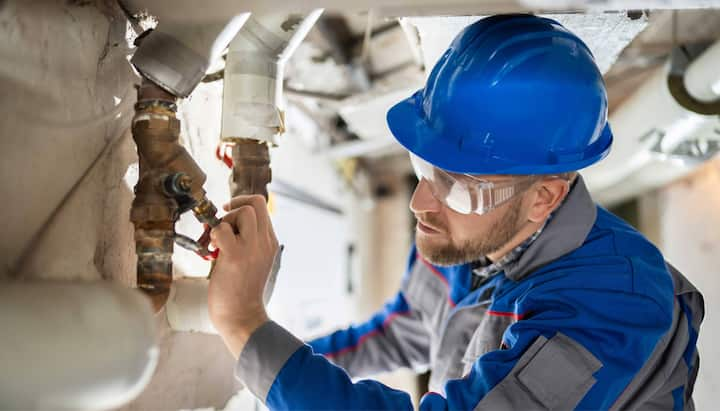
Top Water Damage Prevention Tips
Water damage can be a costly and stressful event, leading to loss of property and disruption in daily life. Water damage prevention is therefore imperative for homeowners. Water damage has financial consequences but can also include health risks such as mold growth. Homeowners must take steps to protect their home from moisture and water infiltration. This includes performing regular maintenance tasks, checking for leaks or cracks, and taking necessary precautions during extreme weather events. Taking proactive measures to prevent water damage will ensure a safe and comfortable home.
Water damage prevention begins with identifying the source
Water damage prevention starts with identifying potential leak sources in homes and businesses. Inspection and location of existing or potential water entry points can prevent extensive property damage. Homeowners should look for signs such as standing water, discoloration, or dampness on walls, floors, and ceilings to identify possible leak sources. Additionally, inspecting any appliance that uses water such as a washing machine or dishwasher can also help determine if they are leaking. It is critical to pay special attention to areas around windows and doors, as these are common places where moisture can enter a home or building. Additionally, exposed pipes that lead outside the home should be examinedfor signs of corrosion or cracks. This could allow water to enter the house. Regularly inspecting roofs for missing shingles, flashing problems, and clogged gutters can also help homeowners avoid costly repairs due to water damage. Taking these water damage prevention steps can save time and money by preventing major water damage before it occurs.
Water damage prevention requires an emergency plan
Having identified potential sources of leaks, the next step in water damage prevention is to create an emergency plan. An emergency plan should include a detailed list of steps to take if an incident occurs. It should also include contact information for reliable service providers who can help with repairs. Additionally, the plan should provide instructions on how to quickly shut off the main water supply and contain any spills or overflows. Creating an emergency plan will reduce the stress and financial burden of dealing with water damage incidents. It is paramount to ensure that all members of the household are familiar with the plan in case it needs to be used in an emergency situation. It is also imperative to regularly review and update the emergency plan as needed based on changes to your property or area.
Regularly inspecting plumbing fixtures
It is worthwhile to inspect the exterior walls of a property for water seepage. If moisture is present on the walls or flooring, this could indicate a breach in plumbing systems. Fixing these issues quickly can mitigate more serious water damage down the line. Homeowners must also be aware that some forms of water damage may not be visible until it is too late. That is why it is essential to conduct regularly scheduled inspections and maintenance. This is so that any potential issues are addressed before they become costly problems. Regularly inspecting plumbing fixtures can help homeowners keep their homes safe from damaging water leaks and floods.
Maintaining your HVAC system
Another key tip for water damage prevention is maintaining your HVAC system. This includes:
- Ensuring that all components are clean and free of debris, dust, or mold
- Changing air filters regularly
- Having an expert inspect the system at least once a year
Proper maintenance of your HVAC system is key to avoiding costly repairs in the future due to water damage. The most common cause of water damage to an HVAC system is blocked condensate drains. As the air conditioner runs, it produces condensation which must be drained away through a pipe or hose. Regular maintenance of your HVAC system can help detect potential problems early before they become too serious and costly to repair. In addition, if you have an older HVAC system with an outside compressor unit, you should also inspect it regularly for signs of corrosion or other issues.
Installing water-sensory detectors
Water-sensing detectors are crucial to water damage prevention. The process can be seen as an act of precaution, symbolizing safety and security. Water-sensing detectors offer convenience and can be installed near areas prone to flooding or leaking such as toilets, sinks, and washing machines. These devices alert homeowners when water leaks aredetected. Additionally, they are usually small and discreet so they do not distract from the home’s aesthetics. Water-sensing detectors provide peace of mind by providing early warning signs when a water leak occurs. Homeowners who install water-sensory detectors are taking a significant step towards protecting their home from costly damage caused by water leaks.
Consider our team for reliable water damage prevention
Water damage is costly and time-consuming to fix. While it is impossible to prevent all water damage, it is possible to reduce the risk of a major leak in your home. Generally speaking, individuals who take the necessary water damage prevention steps have nothing to fear! With the right knowledge and tools at hand, individuals can rest easy knowing they are doing everything they can to protect themselves and their property from water damage. Consider our network for all your water damage repairs!